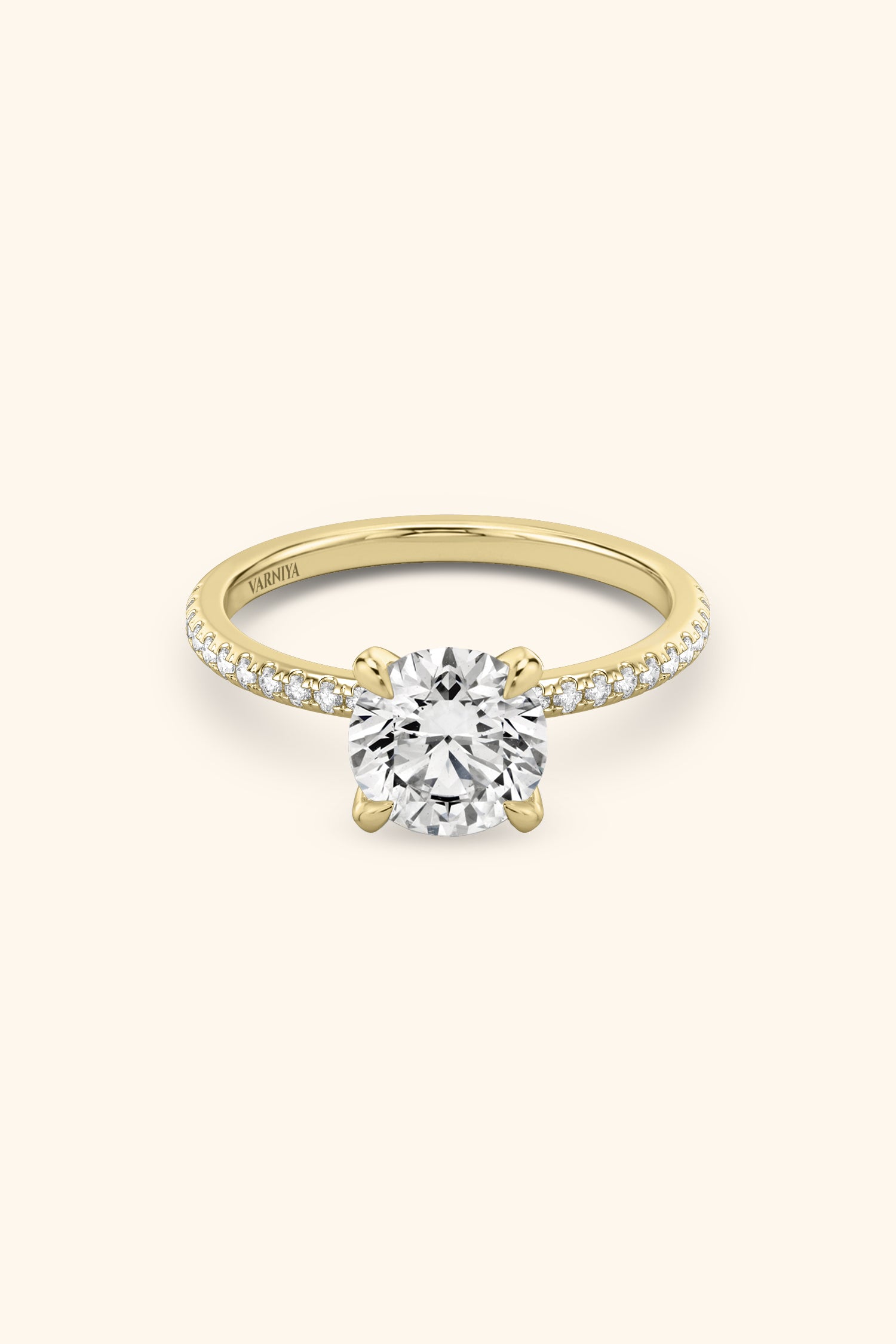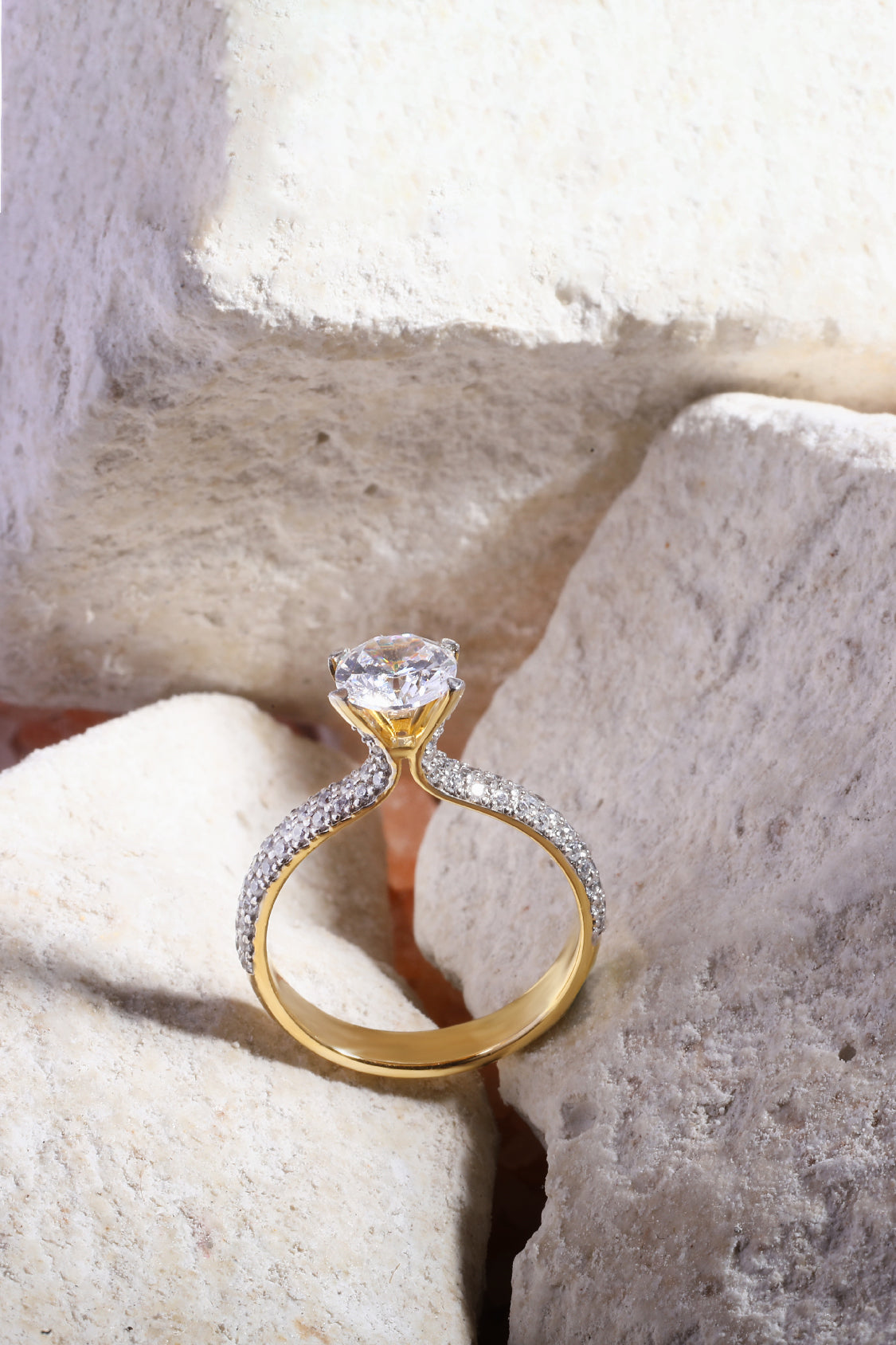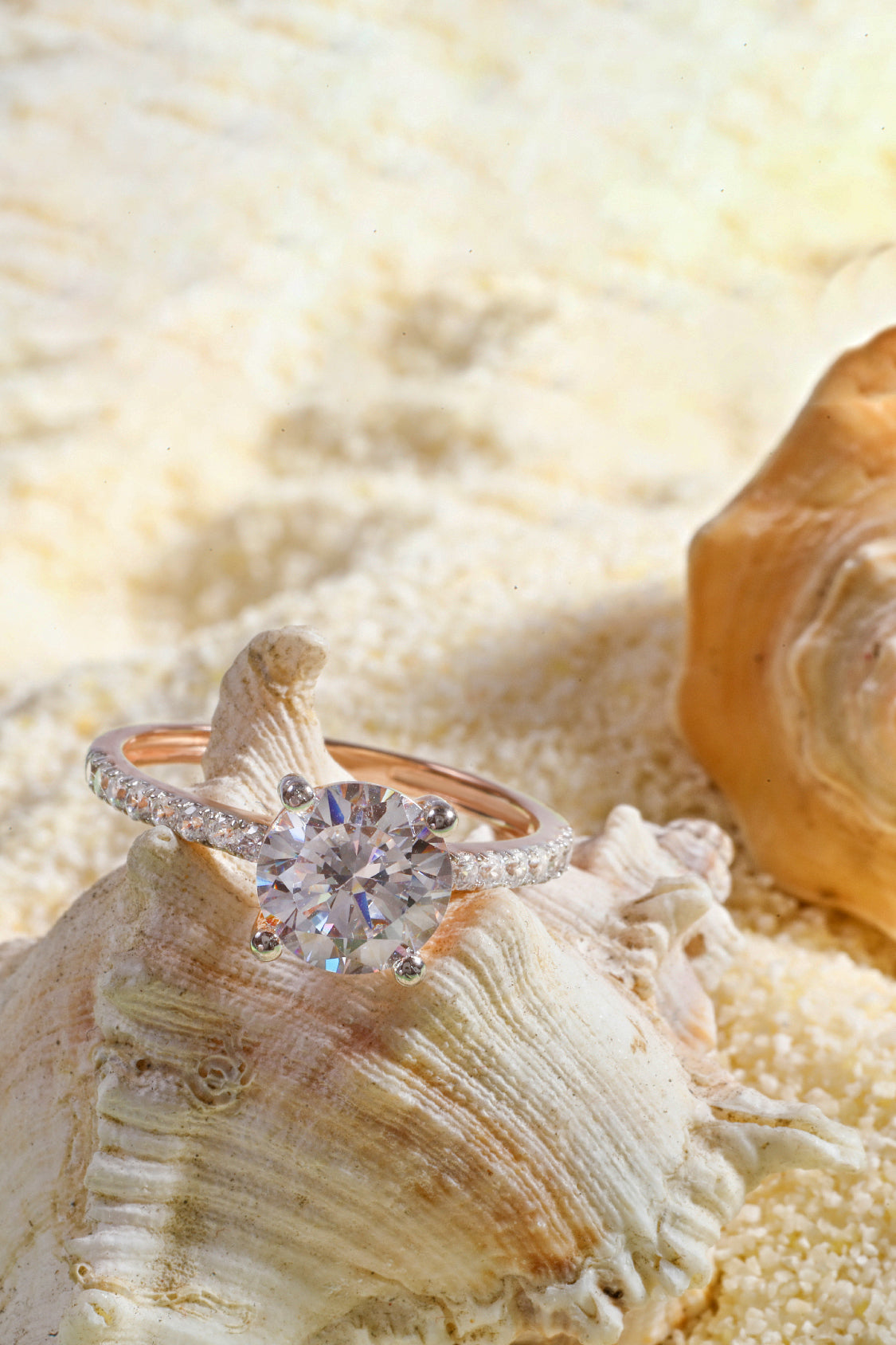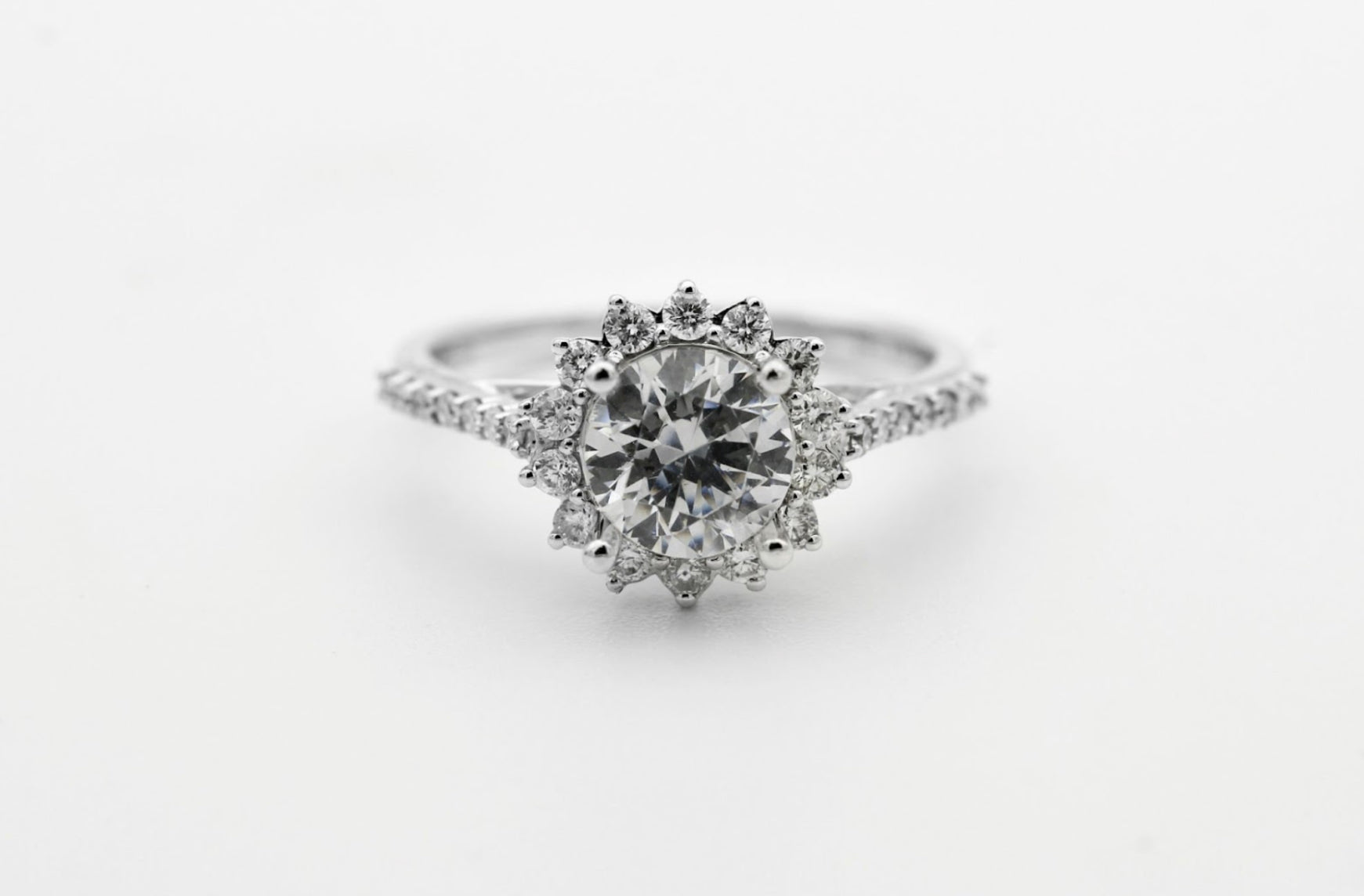
CVD Lab Grown Diamonds: A Smart Choice for Eco-Conscious Consumers
Explore the world of CVD lab grown diamonds, the eco-friendly and ethical alternative that doesn't compromise on sparkle or sustainability.
Welcome to the sparkling world of CVD lab grown diamonds, where high-tech meets high-fashion in the most eco-conscious way possible!
If you've ever wondered about the buzz surrounding these gems, let's dive into what makes CVD (Chemical Vapor Deposition) diamonds not just a smart choice, but a stellar one for modern consumers.
Unlike their mined counterparts, CVD diamonds are created in a lab setting, which significantly reduces their environmental impact.
A recent study by the Diamond Foundry states that lab grown diamonds produce nearly 95% fewer carbon emissions than traditional mining. Let's know more about CVD diamonds in detail.
What are CVD Lab Grown Diamonds?
Have you ever wondered where those shiny, beautiful diamonds in the jewelry store come from? Some are dug up from deep within the Earth, but others, like CVD lab grown diamonds, are made by clever scientists in a lab!
Let’s explore what CVD lab grown diamonds are and how they are made, so even a 5th grader can understand.
The CVD Process: How Diamonds Are Made
Well, not all diamonds come from deep within the Earth. Some are made in a lab using a super cool method called CVD, or Chemical Vapor Deposition. Let's dive into how scientists use modern magic to create these sparkling stones!
CVD: Chemical Vapor Deposition Explained
CVD, or Chemical Vapor Deposition, is a high-tech way to create diamonds from carbon-rich gases. Think of it like building a diamond layer by layer, just like ice forms on a cold window.
Here’s how it works:
-
Starting with a Diamond Seed
-
Every CVD lab grown diamond starts with a tiny diamond seed crystal, which serves as the foundation for carbon atoms to build upon.
-
This seed is usually made from type IIa diamonds, which are the purest kind.
-
Heating Things Up
-
The chamber is filled with carbon-rich gases like methane and hydrogen.
-
The temperature inside is raised to around 800-1,200°C—that’s hotter than a pizza oven!
-
Diamonds Grow Atom by Atom
-
The heat breaks down the gas molecules.
-
Carbon atoms begin sticking to the diamond seed, slowly building a new diamond.
-
This process takes just a few weeks, compared to millions of years for mined diamonds.
-
Final Touches
-
The diamond is carefully cut and polished.
-
Some are even turned into colorless diamonds, just like natural ones.
Key Properties of CVD Diamonds: Clarity, Color, and Carat
1. Clarity: How Clean is the Diamond?
Clarity refers to how many tiny marks, called inclusions, are inside a diamond. These are like little birthmarks that form while the diamond grows.
-
CVD diamonds usually have fewer inclusions compared to mined diamonds.
-
They are grown in a controlled environment, which reduces metallic inclusions and other flaws.
-
Some CVD diamonds go through HPHT (High Pressure, High Temperature) treatment to improve clarity.
2. Color: Why Some Diamonds Look More Yellowish?
Diamonds come in different colors. The less color a diamond has, the higher its value.
-
Natural diamonds can have a yellow or brown tint due to impurities.
-
CVD diamonds grow in a lab, so they are often colorless diamonds or nearly colorless.
-
If a CVD diamond has unwanted colors, it can be improved using the HPHT process.
Did You Know? Some people love fancy colors like blue, pink, or yellow diamonds. These can also be created using CVD technology!
3. Carat: The Size of the Diamond
Carat is how we measure a diamond’s weight. Bigger diamonds have more carats and usually cost more.
-
CVD diamonds can be made in different sizes, from small stones to diamonds grow as big as 10 carats!
-
A diamond seed is placed in a chamber, and carbon atoms build up over time, making the diamond larger.
-
The process takes just a few weeks, compared to millions of years for natural diamonds.
CVD vs. Natural Diamonds: An Eco-Friendly Perspective
How Are They Made?
-
Natural Diamonds: These diamonds form over millions of years deep inside the Earth’s mantle. They require extreme pressure and extreme temperatures to grow.
-
CVD Diamonds: These are made using chemical vapor deposition (CVD). A diamond seed is placed in a chamber, and carbon gas helps it grow into a real diamond in just a few weeks.
Both are real diamonds. The main difference? CVD diamonds grow in a lab, while natural diamonds come from mining.
Which One Looks Better?
-
Natural diamonds sometimes have flaws called metallic inclusions because of their long formation process.
-
CVD diamonds are grown in controlled settings, meaning they are often colorless diamonds with fewer imperfections.
-
Some CVD diamonds real may have a slight brown tint, but they can be improved using HPHT process to make them clear.
So if you want a flawless diamond, CVD lab grown diamonds may be a better choice!
If you care about the environment, affordability, and ethical concerns, CVD diamonds are the best option. They shine just as bright, last just as long, and don’t require damaging the Earth.
Next time you’re shopping for a diamond, think about this: Do you want one that took millions of years to form, or one made with cutting-edge CVD technology in an eco-friendly way? The choice is yours! 💎
Benefits of Choosing CVD Lab Grown Diamonds
1. Eco-Friendly Production
Mining for natural diamonds can destroy forests and pollute rivers. It also uses a lot of energy and harms wildlife.
CVD diamonds are made in a lab using chemical vapor deposition (CVD process). This method:
-
Uses just a few weeks to create diamonds, unlike mined diamonds that take millions of years.
-
Requires less energy, especially when using renewable energy sources.
-
Avoids digging massive holes in the Earth’s surface, protecting nature.
2. Ethical Assurance
Traditional diamond mining has a dark side. In some areas, miners face unsafe conditions and unfair wages. Worse, some real diamonds are linked to conflicts, often called "blood diamonds."
With CVD lab grown diamonds, you never have to worry about that!
-
No child labor, unsafe work conditions, or unfair pay.
-
Lab created diamonds are 100% conflict-free.
-
Their crystal structure is physically identical to natural diamonds, so they look and feel the same.
3. Cost-Effective
Diamonds are expensive, but why? Traditional natural diamonds are mined from deep underground, which requires a lot of effort, energy, and money. This drives up the price.
With CVD diamonds grow in a lab, the process is faster, controlled, and requires fewer resources to produce diamonds. This makes them much more affordable than mined diamonds.
-
A CVD lab grown diamond can cost 30-40% less than a similar-sized mined diamond.
-
There’s no added cost from mining, transportation, or middlemen.
-
If you want a bigger diamond without spending a fortune, CVD diamonds are the way to go.
4. Guaranteed Quality
Some people think lab diamonds are fake, but that’s not true. CVD lab grown diamonds are real diamonds, with the same crystal structure identical to natural diamonds. Even professional jewelers need a diamond tester to tell them apart!
Here’s why their quality is guaranteed:
-
They have fewer impurities because they’re made in a clean, controlled lab.
-
No metallic inclusions that are common in mined diamonds.
-
They go through high pressure, high temperature (HPHT process) to improve their clarity and color.
5. Customizable Features
Want a diamond that fits your style perfectly? CVD diamonds give you that option!
Unlike natural diamonds, which form randomly in the earth’s mantle, lab grown diamonds are created in a controlled setting. This allows jewelers to customize their:
-
Shape – Round, oval, heart, or even a unique cut of your choice.
-
Size – Get the perfect carat weight without breaking the bank.
-
Color – Choose colorless diamonds or go for fancy shades like blue or pink.
With CVD chemical vapor deposition, you can get a diamond tailored just for you. Want a rare type IIA diamond? That’s possible too!
6. Innovative and ModernTransparency in Pricing
Ever wondered why mined diamonds are so expensive? Pricing can be confusing because of supply chains, middlemen, and branding. But with CVD lab grown diamonds, pricing is straightforward.
-
No hidden costs from mined diamond extraction.
-
No metallic inclusions or flaws that lower quality and affect price.
-
You pay for quality, not artificial rarity.
CVD and HPHT Diamonds: A Comparative Analysis
Lab-grown diamonds are produced using two primary techniques: CVD (Chemical Vapor Deposition) and HPHT (High Pressure High Temperature). Both look just like natural diamonds, but they have some differences.
Let’s break it down simply.
How Are CVD and HPHT Diamonds Made?
1. CVD Process
-
Scientists place a tiny diamond seed inside a low-pressure chamber.
-
They pump in carbon-rich gases like methane.
-
Using high heat, the gas turns into carbon atoms that attach to the seed, making it grow layer by layer.
-
The result? A pure, crystal-clear CVD diamond.
2. High Pressure, High Temperature (HPHT) Process
HPHT lab grown diamonds undergo intense pressure and heat, unlike CVD diamonds, which are formed in low-pressure chambers
-
Scientists mimic the earth’s mantle, where natural diamonds form.
-
They apply extremely high pressure (over 870,000 pounds per square inch) and extreme temperatures (above 2,500°F).
-
The heat and pressure turn carbon into a diamond crystal.
-
The result? A diamond just like one found underground.
Differences Between CVD and HPHT Diamonds
| Factor | CVD Diamonds (Chemical Vapor Deposition) | HPHT Diamonds (High Pressure High Temperature) |
|---|---|---|
| Formation Process | Grown in a low-pressure chamber using carbon-rich gases. | Formed under extreme pressure and temperature, mimicking Earth's mantle. |
| Growth Direction | Grows in a single-crystal layer from a diamond seed. | Grows in a cuboctahedral shape due to extreme pressure. |
| Time Required | Takes a few weeks to grow in a controlled lab setting. | Requires several weeks but slightly faster than CVD. |
| Purity | Often purer due to fewer metallic inclusions. | May contain metallic inclusions from the high-pressure environment. |
| Clarity | Typically higher clarity with fewer imperfections. | May have metallic flux inclusions, requiring additional treatments. |
| Color Formation | Can have a slight brown or gray tint, but can be improved with HPHT treatment. | Naturally forms yellow or blue hues, influenced by nitrogen or boron content. |
| Post-Growth Treatment | Sometimes undergoes HPHT treatment to enhance color and clarity. | May require additional treatments to remove unwanted tints. |
| Appearance | Similar to natural diamonds but with fewer internal flaws. | Resembles natural diamonds but may have metallic traces. |
| Cost | Generally more affordable than HPHT diamonds. | Typically slightly more expensive due to the complex process. |
| Applications | Preferred for engagement rings, fine jewelry, and investment diamonds. | Commonly used for industrial applications and high-quality jewelry. |
| Certification | Certified by GIA, IGI, and other gemological institutions. | Also graded by GIA, IGI, and other authorities. |
| Market Demand | Increasing due to eco-friendly and ethical appeal. | Popular in markets where traditional diamond qualities are preferred. |
Consumer Guide to Choosing CVD Lab Created Diamonds
CVD lab grown diamonds are becoming a popular choice for buyers. They offer beauty, quality, and affordability. But how do you choose the right one? This guide will help you make an informed decision.
1. Understand CVD Lab Grown Diamonds
CVD (Chemical Vapor Deposition) is a process that creates diamonds in a lab. These diamonds have the same crystal structure and chemical composition as natural diamonds. They are real diamonds, not synthetic diamond substitutes.
2. Look for Certification
Certification is key when buying lab created diamonds. Look for certificates from respected organizations like GIA (Gemological Institute of America) or IGI (International Gemological Institute). These documents confirm the diamond’s quality, including its color, clarity, and carat weight.
3. Choose the Right Cut and Shape
Cut affects how much a diamond sparkles. Popular cuts include round, princess, and cushion. The better the cut, the more the diamond reflects light. This applies to both CVD and HPHT diamonds.
4. Compare Clarity and Color
Lab diamonds are available in different clarity grades. Higher clarity means fewer imperfections. Colorless lab diamonds are the most valuable, but fancy colors like pink and blue are also available. If you prefer a colorless diamond, check for a D-F color grade.
5. Decide on Carat Weight
Carat weight affects size and price. A one-carat diamond is a popular choice, but you can find smaller or larger options depending on your budget. Lab grown diamonds are usually more affordable than mined diamonds, so you may get a larger stone for the same price.
6. Consider the Growth Process
CVD diamonds grow layer by layer in a lab. They have fewer metallic inclusions than HPHT diamonds, making them clearer. The CVD growth process also allows for better quality control, ensuring high purity.
7. Compare Prices
CVD diamonds are cost-effective compared to mined diamonds. Their price depends on size, cut, and clarity. Use online comparison tools to check prices from different retailers. Transparent pricing helps you get the best deal.
8. Check Ethical and Environmental Impact
Lab diamonds are an eco-friendly choice. They require fewer resources than mined diamonds. Choosing CVD diamonds helps reduce environmental damage and eliminates ethical concerns linked to diamond mining.
9. Ask About Customization
Many jewelers offer customizable features for CVD diamonds. You can select different settings, metals, and designs to create a unique piece.
10. Shop from Trusted Retailers
Buy from reputable sellers who specialize in CVD and HPHT diamonds. Read customer reviews and check return policies before making a purchase.
CVD Real or Synthetic Diamond: Debunking Myths
-
Real Diamonds, Different Origin: CVD diamonds are real diamonds with the same chemical composition (pure carbon in a crystalline structure) as mined diamonds. The key difference lies in their origin—lab-grown versus naturally occurring.
-
Physical and Chemical Identity: Both CVD and natural diamonds exhibit identical physical and chemical properties. They share the same hardness, refractive index, and sparkle, making them indistinguishable to the naked eye.
-
Certification and Grading: Like mined diamonds, CVD diamonds are also graded by reputable gemological institutes around the world based on the same criteria: cut, color, clarity, and carat weight. This certification further affirms their authenticity as real diamonds.
-
Durability and Resilience: CVD diamonds possess the same durability and resilience as their natural counterparts. They are equally capable of withstanding the same amount of wear and tear, making them suitable for everyday jewelry.
-
No 'Synthetic' Appearance: One common myth is that lab-grown diamonds look synthetic or glass-like. In reality, they display the same brilliance, scintillation, and fire as natural diamonds.
-
Environmental and Ethical Superiority: While natural diamonds often carry concerns of ethical mining and environmental degradation, CVD diamonds offer a guilt-free alternative without compromising on beauty or quality.
-
Market Acceptance: Increasingly, CVD diamonds are gaining acceptance in the jewelry market, recognized not just for their ethical and environmental benefits but also for their quality and aesthetic equivalence to mined diamonds.
-
Investment Potential: While traditionally viewed as less valuable, the growing market trends and demand for sustainable options are enhancing the resale value and acceptance of CVD diamonds as a viable investment.
Are CVD Diamonds Real? Understanding the Authenticity and Value
Some people think lab diamonds are the same as synthetic diamonds like cubic zirconia or moissanite. But those are not real diamonds. They do not have the same crystal structure or hardness.
CVD diamonds are real diamonds and rank 10 on the Mohs hardness scale, just like mined diamonds. They are also optically identical to natural ones, meaning they sparkle the same way.
CVD diamonds are 100% real diamonds with the same crystal structure as natural diamonds. The only difference is how they are made.
The Market for CVD Lab Diamonds
The demand for CVD lab grown diamonds is growing fast. More people are choosing them over natural diamonds because they cost less and are eco-friendly. But what does the market look like? Let’s explore.
Many shoppers now prefer lab grown diamonds over mined diamonds. According to a recent industry report, the market for CVD diamonds is expected to reach $49.9 billion by 2030. This growth is driven by rising awareness of sustainability and ethical concerns about natural diamonds.
Jewelry brands are also adapting. Companies like De Beers and Signet Jewelers now offer CVD lab grown diamonds alongside traditional natural diamonds. Even high-end luxury brands are joining the trend of creating lab grown diamonds.
Experts predict CVD chemical vapor deposition technology will keep improving. More customers will see CVD diamonds real and identical to natural diamonds. As lab technology advances, we might even see CVD diamonds grow with fancy colors. With their stunning brilliance, identical crystal structure, and growing market acceptance, they are the future of fine jewelry. Whether for sustainability, price, or quality, choosing CVD diamonds is a smart decision.
The diamond industry is evolving—are you ready to embrace it? 💎














